If you have no idea what retargeting is I'll try to explain it to you with a funny example: it's like playing catch with your dog. The goal is for the dog to bring the ball back to you.
The exact same thing happens when we talk about visitors and conversions.
What is retargeting and why is it important to know?
When a user who visits your landing page or your site does not convert (does not purchase or does not leave personal data), it could be a lost contact. However, thanks to cookies/pixels you can capture the browser with which users are browsing and send them ads, which will appear during their navigation on the web. The goal is to ensure that by seeing your ad several times, they will return to your page and finally CONVERT .
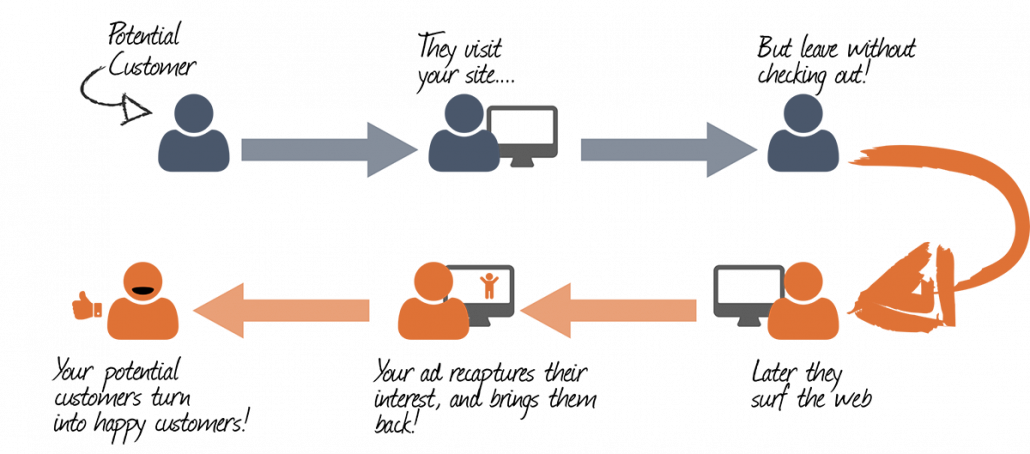
Retargeting, when done strategically, can be more effective than any other digital advertising channel.
CMO.com has released 15 staggering statistics about retargeting that are almost unbelievable! Here are a few:
- Retargeting can increase brand searches by 1,046% ;
- The average CTR is 10 times higher than that of ordinary ads;
- Retargeted users are a full 70% more likely to convert than those who did not receive retargeting campaigns.
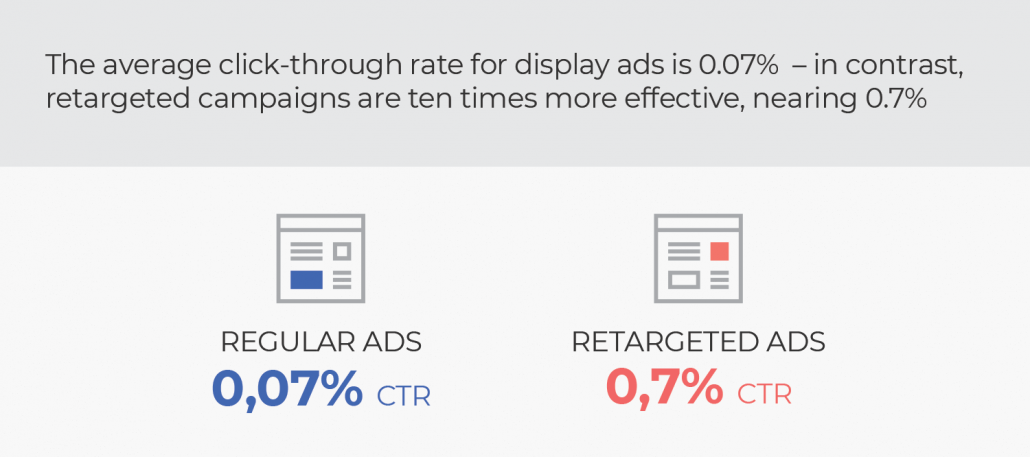
It’s easy to think that retargeting is great after seeing this data, but it’s also obvious that it’s no easy feat to know how to apply it in a way that works and gets you the results you want.
Surely grouping all your contacts into a group by creating a single audience makes your work easier and brings conversions. This is why many people who own a business are true fans of retargeting.
You don't have to be a genius, but if you really want to give it your all, I suggest you continue reading the article and discover this aspect of marketing that not everyone knows about.
1. SEQUENTIAL RETARGETING
Is your sales cycle long enough? Or do you have a complex sales process? If so, sequential retargeting may be right for you.
You can group your audience into different categories or lists based on the landing page they landed on, the length of time they stayed on your page/site, the material they downloaded.
When a user takes an action, they are immediately sent a series of messages to take them directly to the final conversion process and, once they have converted, they will be automatically excluded from the rest of the ads.
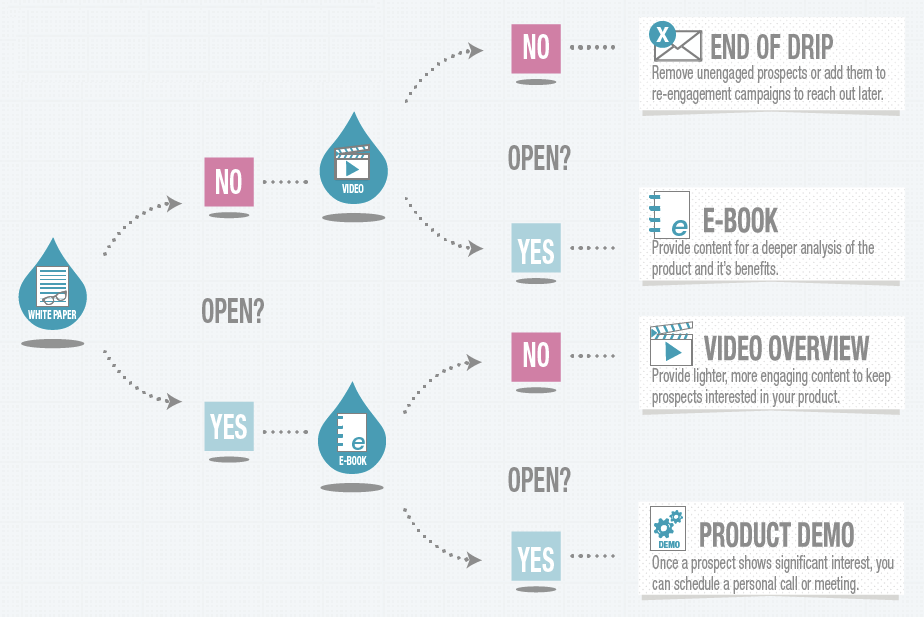
Just like a regular Google Ads funnel, you can use retargeting to add touchpoints between your brand and your customer to create more awareness of your brand. You can also understand where your users are stuck in the acquisition process, solve their problems, and push them further.
To get an idea of what types of ads you can create for a campaign like this, take a look at this example, taken from Pagewiz :
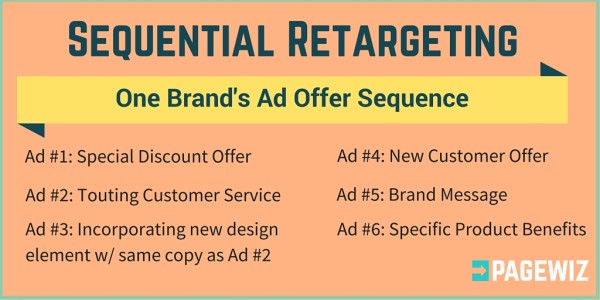
You can see how the first ad tries to stimulate the user to purchase as quickly as possible. If this does not happen within a certain period, then it will be a user subject to sequential retargeting.
Here is another example of how to create a plan of sequential messages on a timeline and divided by actions completed.
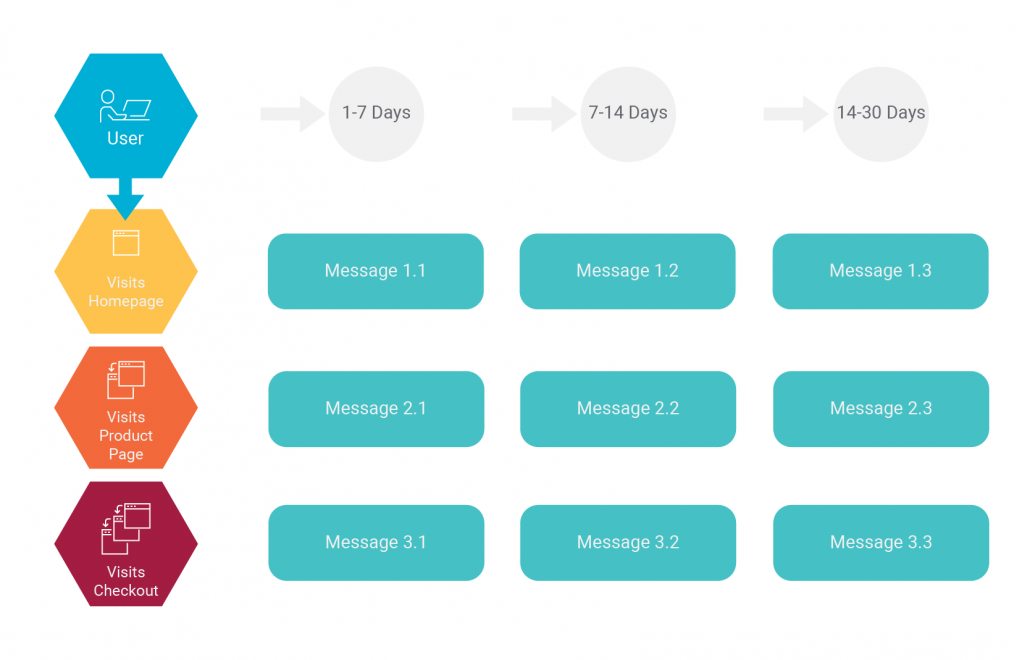
To summarize briefly: sequential retargeting is sending an ad containing specific text and images based on the stage of the process the visitor is in , with the aim of bringing them back to where they left off and encouraging them to continue. Your goal, as an advertiser, is to use strategies to ensure that the user, in the end, purchases.
2. TIME DELAYED RETARGETING
Inserting a cookie or pixel allows you to track the audience that interacts with your site/page (Google Ads allows tracking for a maximum of 540 days).
In this case, time is your ally. Temporal retargeting is not based on the actions that visitors perform, everyone will see the same thing, regardless of their behavior :
- Week 1: All visitors see ad #1
- Week 2: All visitors see ad #2
- Week 3: All visitors see ad #3
- Week 4: All visitors see ad #4
- etc…
The best thing about this type of campaign is that you don't have to create a separate landing page for your ad (although it doesn't hurt to do so). For example, if you offer a service, you can send ads that show the benefits the user would get by purchasing your service .
Even better if you have a mailing list, so you can use all the contacts on the list and send them retargeting ads.
Here's an example of how to do it:
- Week 1: Example of an offer
- Week 2: Sending a screenshot with the improvements brought by our Google Ads campaigns
- 3rd Week: Sending the packages available for purchase
- Week 4: Submitting a Case Study
- Week 5: Sending the offer
Every time a user converts, they will be excluded from the list.
The benefit of this campaign is that you can segment your audience based on the day they visit.
In short: a user visits your site and does not purchase, during the following 30 days you will make sure that an ad appears to him, if in this period of time he has not yet purchased, for another period of time (which you establish) you will show him another type of offer.
To summarize briefly: if you have been sending retargeting campaigns to a user for a long time and they have not converted yet, it means that you need to offer them a greater incentive to take action.
You may want to create product ads or specific offers for the first 2 weeks with your logo and a catchy phrase or call-to-action. For example, you could offer a 10% discount to get people to take action (exclude visitors who have already purchased from this campaign so they don't get the discount too).
3. RETARGETING WITH OFFER CHANGE

If you are unlucky enough to have 98% of visitors that do not convert after the first visit to your site/page, don't worry, it's normal. Let's try to make it a fortune!
The problem could be with your landing page or the call-to-action you used: it often happens that people don't buy when the offer seems deceptive or when the value of the offer is not effectively and clearly conveyed.
This is the right time to use the retargeting strategy, not only to get more conversions, but also as a tool to understand if it is time to change, and how, your initial offer.
Let's say that on your landing page you are offering a free consultation and that this landing page has a conversion rate of 2% (only 2 out of 100 visitors request your consultation). In this case, to try to hit the remaining 98%, you can take inspiration from the list below and try to invite users to request a free consultation by offering them in exchange:
- Coupon
- Checklist
- Survey
- Video
- Toolkit (package of online tools they can use)
- Calendar
- Interview
- Consulting
- Event Tickets
- Live demo
- Giveaway
- Swipe File (a file that holds titles for sales letters, new techniques to try, notes, etc.
- GIFs
- Free Quotes
- White Paper (company document which explains in detail the product/service and its advantages)
- eBook
- Gadgets, such as a t-shirt
- Industry Statistics
- Case studies
To recap, there’s always a reason your landing pages aren’t converting!
It could be that you are not explaining the value of your product/service effectively enough, or it could simply be that your offer is not attractive enough!
Always remember that visitors have a thousand options to choose from and you are probably not the only one offering them that product. Take the time to educate and follow them to make the right choice!
4. RETARGETING UP-SELLING
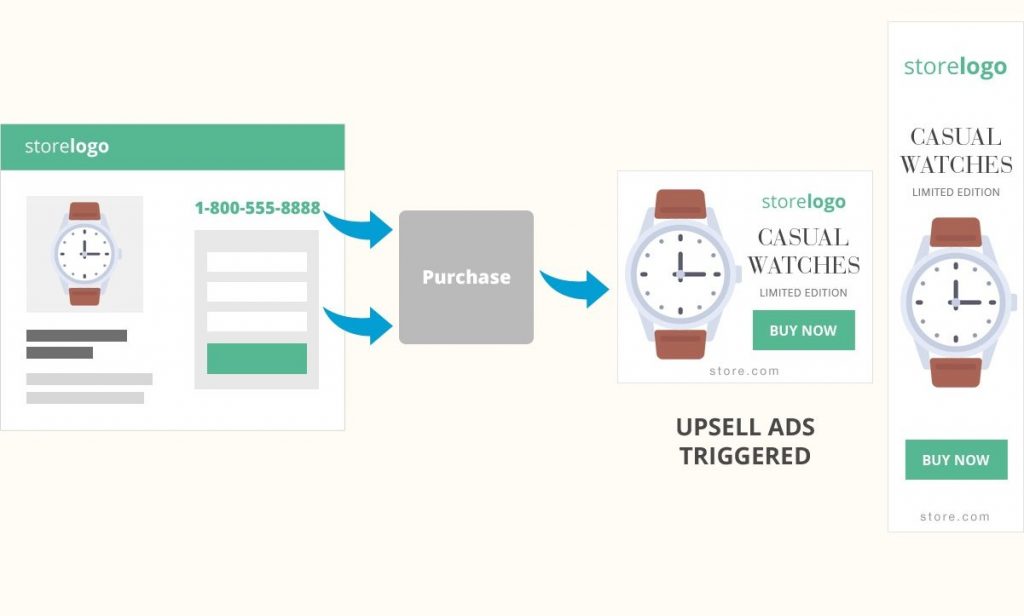
If a user has already purchased a product, they are very likely to purchase from you again. In fact, 41% of total eCommerce site revenue comes from buyers who purchase from the same seller again.
Furthermore, according to Adobe , repeat buyers will likely spend 5x more than the first time.
Here is an example of an Amazon retargeting email, showing the next and most innovative model of a product.
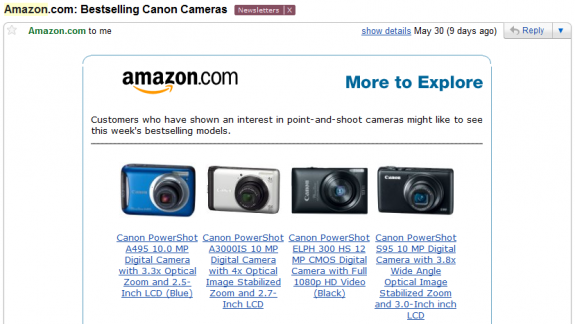
And if you don't have an eCommerce? Well, if your business includes Lead Generation activities, you can retarget those who have visited your page with new offers that can be for example new models of the product they were looking at or additional products.
To summarize briefly: If visitors buy from you, it is because they trust you. Don't be ashamed to ask them to buy again , especially if you are really selling something that has added value.
5. RETARGETING DOWN-SELL/CROSS-SELL
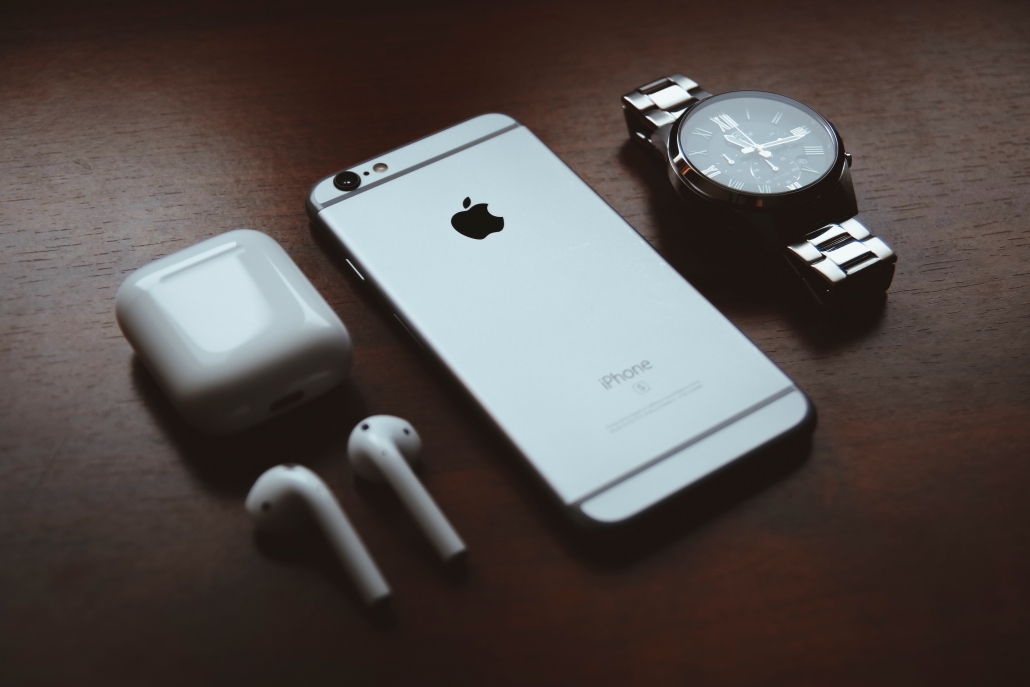
It may happen that visitors are not interested in purchasing from you again.
In this case, show them a different offer than the one they previously rejected.
Let's say you have purchased our PPC campaign management service. Logically we will try to make you also purchase a Landing Page, which represents exactly a complementary service to the purchase you have made, this method is called Cross-sell (so you propose something that can be useful to the product they have already purchased).
If the landing page doesn't interest you either, we can use the down-sell method: for example, we could offer you a free guide on how to develop a perfect landing page, with the aim of converting you in the future.
To summarize briefly:
- if someone buys an orange, up-sell = squeeze – oranges
- if someone buys an orange squeezer, cross-sell = a recipe book
- if someone doesn't buy an orange squeezer, down-sell = a book of orange peel creations
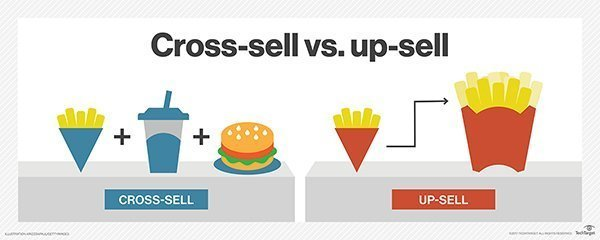
6. TIER-BASED RETARGETING
Have you ever thought about using Google Analytics data to create a unique retargeting audience? If not, here are some things you should know:

Let's take as an example a recent case study from ThinkWithGoogle, where Periscopix helped Watchfinder (a leading UK watch retailer) create more than 20 retargeting audiences, which were segmented by: location , language , behaviors and habits (data provided by Google Analytics).
They then discovered that a certain ISP (internet service providers) from London's financial district was interested in their products, so they were able to target visitors from banks such as JP Morgan and Goldman Sachs.
After just 6 months, the ROI of retargeting campaigns has settled around 1300%. The average order has increased by 13% and the CPA has decreased by 34%!
7. RETARGETING BASED ON THE SITE'S FLAG PAGE
Each page of your website taken individually has a certain value, seen from an ROI perspective.
To put it more simply: if a visitor has only seen your homepage and not the other sections (you can see it through Google Analytics), it will be difficult to apply retargeting on him, it would only be a waste of money and time, as it shows that he is not interested in your company.
It is therefore important to proportion the offer based on the section on which the visitor spent the most time (2 minutes+).
Paying an average of €1 per click for an audience that has stayed on the site for more than 2 minutes will pay off faster than paying €0.50 for all visitors.
An additional benefit of this campaign is that you know exactly what the visitor is interested in, so you can offer them exactly that product/service and it will be much easier to get a conversion.
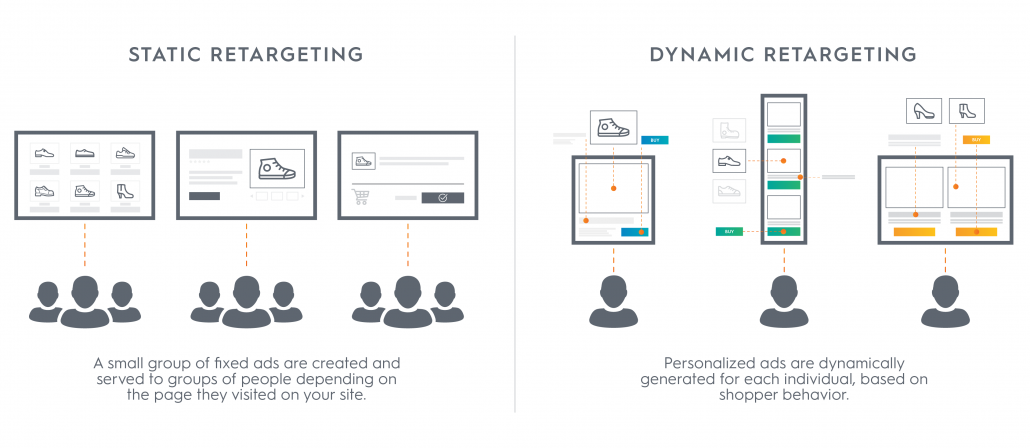
It makes sense to offer people who have only visited the homepage something simple, such as an eBook.
To recap briefly: Check your Google Analytics dashboard and see which pages on your site users spend the most time on. (Usually this is the “about us” or “demo” page.) Once you identify these, you can further segment users by page URL, time on site, and location, so your ads are highly personalized to your audience.
8. CRM RETARGETING
CRM is a tool used by companies, where they enter all their contacts and customers.
This type of campaign is based on email addresses and therefore does not use cookies or pixels.
By exporting your CRM contact list to a platform like AdRoll , you can match the email address to their social media profile (such as Facebook) or platforms like Gmail.
Case study example: AdRoll helped Kiehl's use CRM to create a unique retargeting audience and send offer ads to contacts.
What it entailed:
- a 12.9% ROI
- a conversion rate of 38%
- web reach greater than 3.2 times
If you don’t have a CRM you can use MailChimp (a tool to send your newsletters) by entering all the email addresses of your contacts/customers. If you want, you can also “buy” a list of email addresses of advertisers who address your same audience (financial institutions often do this).
To summarize briefly: Your CRM contains potentially millions of pieces of information about your visitors’ behavior . Use this data to create specific audiences and kickstart your retargeting strategy.
9. MASS EMAIL RETARGETING
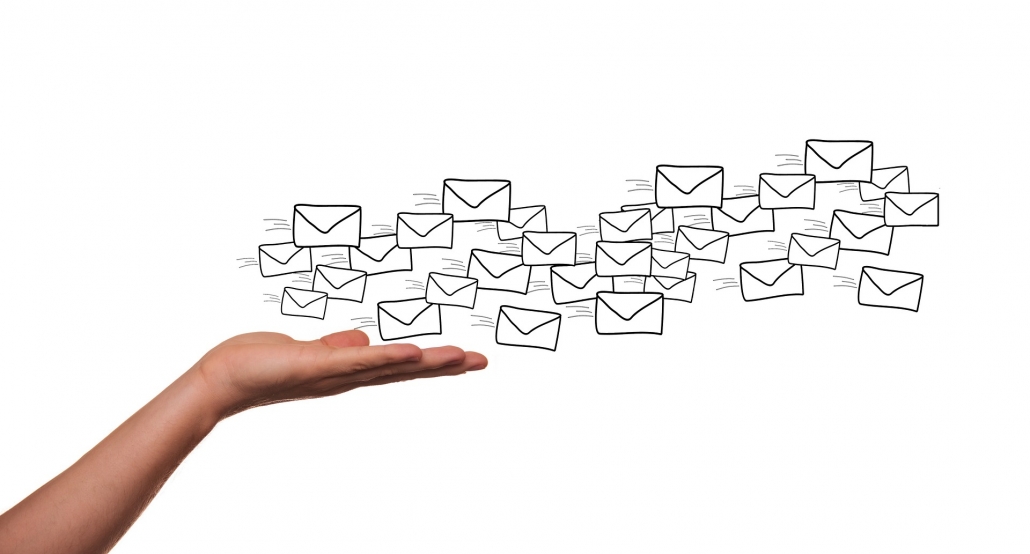
While we’re on the subject of email addresses, you can “hit” your contact list directly through Google Ads, Facebook, or Twitter.
Google Ads has a feature called Customer Match , Facebook has Custom Audience and Twitter Tailored Audience .
The main thing to keep in mind when using this campaign is the compatibility rate of email addresses with users of a certain platform .
According to WordStream, compatibility with Google, Facebook, and Twitter should be as follows:
- Google = 50.4%
- Facebook = 48.99%
- Twitter = 10.2%
As you can see, the giants of the advertising world (Google and Facebook) have a very high compatibility rate, thanks to the massive use of the platforms. Twitter, on the other hand, having fewer users, is less compatible.
Once you’ve determined which platforms you’ll use this feature on (maybe even more than one) you can take advantage of two different types of ads and networks to help your mailing list convert.
To summarize briefly: as with any other retargeting campaign, do not forget the importance of segmenting the audience into specific portions: sending the same message to the entire email list would not be functional.
10. INDIVIDUAL EMAIL RETARGETING

Did you know that it is possible to add a hidden HTML tag to your emails and thus add pixels/cookies to the browser of the person who opens the email? To create this type of campaign I recommend SiteScout .
If you've sent promotions through email, you can create an additional ad group to track people who opened the email and extend the offer to them.
Keep in mind that this only works for those with Gmail or Hotmail email addresses as they automatically open images.
To summarize briefly: if you want to get the best ROI from a specific email marketing campaign, strongly consider the option of inserting a hidden HTML code to then implement your retargeting more carefully and effectively . This will allow you to send retargeting ads to interested users and will reduce the time to conversion.
11.RETARGETING TO LOOKALIKE (SIMILAR) AUDIENCES
When you are creating your retargeting audience based on your landing page visitors, PPC networks like Google and Facebook allow you to create a similar audience to the one you selected (users who show the same interests and behaviors). You will then get a list of people who have never visited your landing page or your site, but who may be potentially interested.
Google Ads calls them similar audiences , while Facebook lookalike audiences .
So, as soon as you create your retargeting list based on your real visitors, Google and Facebook will create a parallel one, based on the characteristics of your list.
In 2013, Google created similar audiences and since then the system has been gradually optimized. Today, you can expect a 40% increase in conversions .
To summarize briefly: sometimes the lookalike audience can be larger than your real audience. Don't be afraid and take advantage of it, but tread carefully: a lookalike audience is not always really interested in your offer, I emphasize that it is POTENTIALLY.
12. PUSH-ALONG RETARGETING
Do you have a complex conversion funnel where visitors need help getting to the next step? If so, this could be the solution to your problems.
Just as you can track specific keywords as your visitor nears the bottom of the funnel, you can do the same with retargeting ads.

The goal is to manually create ads that intuitively nudge your audience to move to the next step in the funnel.
It may seem similar to sequential retargeting, but in this case it takes into account ONLY the stage of the conversion process in which the visitor is . No additional factors are involved.
To summarize briefly: make sure your audience size is large enough at each stage of your funnel.
If you have fewer than 1,000 visitors at each stage of the conversion process, you probably won't get many clicks, impressions, or conversions.
13. LOCATION-BASED RETARGETING
If you are advertising nationwide or even internationally, your retargeting campaigns CANNOT all be the same.
You can see the geographic area where your visitors come from through your Google Ads account. Associate your ads with a specific geographic area (the one you have detected) and you will see how your conversions will increase by 53%.
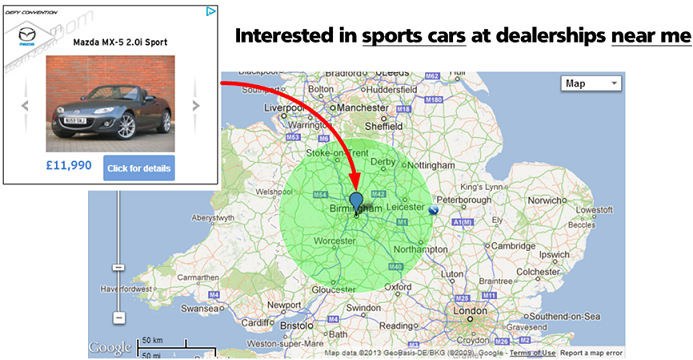
Here is the case of Mazda (car dealer).
After analyzing online and offline insights, Mazda used IntelliAds (a retargeting platform) to tell users to visit local showrooms, based on the car models they looked at online.
The result? The average sales value of cars tracked through ad impressions was 98%.
You can then create retargeting ads that are specific to your audience’s geographic area. If you also add a landing page that aligns with your ad message, you could get a killer performance.
To summarize briefly: Start by identifying the geographic area with the highest number of visitors to your site/landing page. The more impressions you get, the more likely you are to receive clicks that become conversions. Once you have success, repeat the process by creating unique retargeting ads and landing pages specifically for the next geographic area.
14. REDIRECT LINK RETARGETING
Have you ever wished you could catch people landing on URLs or pages that you don’t control? In a way, this is possible thanks to this type of campaign.
In fact, through the SiteScout platform you can reach every person who clicks on a specific link and make them part of your retargeting audience .
This type of campaign is optimal for certain contexts:
- Your site offers a wide selection of comparable products, where you are earning through external links
- All employees of your company have a digital signature with the link to the company website and you will be able to track those who have visited your site through an email they have received
- By inserting your link into forums, blogs, or posts where you are cited
To summarize briefly: redirect link retargeting is perfect for people and companies who want to capture visitors from sites or pages that they do not directly control.
15. RLSA RETARGETING
RLSA = remarketing list for search ads . It is a Google feature launched in 2012 that allows you to create text ads exclusively dedicated to the retargeting audience list you have.
RLSA also lets you set bid modifiers across search and shopping ads, so you can bid more or less aggressively based on what people in your audience are searching for.
Here's an example: when you're in a high-competition industry and you want to outrank your competitors, but at the same time you also want your ad to only appear if the user has already visited your site or page.
Let’s say the visitor was comparing your site to another, but never made a purchase on yours. You can group these types of visitors, create an audience, and have your ad appear to them when they type in your competitor’s name.
For this type of campaign, it is possible to draw up a more generic audience, since it is necessary to select keywords. Among other advantages, we identify:
- World Travel Holdings saw a 300% increase in conversion rate and 30% increase in ROI by broadly matching keywords such as “gift” and “gift” against its own brand terms;
- A German tire company added modified broad match keywords only to users who had visited the site in the past without purchasing. Sales increased by 22% and conversions by 163%;
- A telecommunications company, on the other hand, customized its ad text based on the pages on its site that users visited and its cost per conversion decreased by 66%.
To put it simply, RLSA works wonders in identifying network targets.
To summarize briefly: to be successful with RLSA, add bid modifiers to your audience and select “Bid only” from the “Target & Bid” option. This will allow you to be more (or less) pushy with users who have already visited your site.
16. ANTI-PAGE ABANDONMENT RETARGETING
This point is more of a strategy on how to use remarketing rather than a standalone campaign.
I'm sure there's a Google Analytics metric that you've become obsessed with: bounce rate (how many people not only leave your page without taking any action, but don't even visit other sections).
If your bounce rate is between 60% and 100%, what's the point of investing budget for users who aren't even remotely interested in your product/service?
For this reason, it would be advisable to install a cookie capable of detecting people who remain on your site or landing page for at least 60 seconds.
To summarize briefly: a bounce does not necessarily mean that the user is not interested. This tactic is especially useful for landing pages without links to other sections or insights, where practically all users who do not convert are considered as “bounces”.
17. RETARGETING NO COOKIE
Marketing and marketing tools are constantly evolving and making life easier for us as advertisers. It is therefore clear that old methods, such as cookies/pixels, will gradually become less and less modern. Furthermore, as more and more users access from mobile, it is likely that cookies will disappear quickly. Therefore, no-cookie retargeting campaigns will become increasingly popular.
If you are using a cookie-based retargeting strategy and are not getting good results, this option is for you.
There are several ways to identify a visitor across devices:
- Fingerprint (through digital fingerprint) is similar to the ID system
- Browser type
- Installed software
- Jet lag
- IP address
To summarize briefly: do you know why Google has always loved social networks? Because every time a person browses, whether from desktop or mobile, they are almost always logged in with their Facebook account .
18. DYNAMIC RETARGETING

This campaign helps you create image ads at scale, so you don't have to create hundreds or thousands of text and image ads.
In the example below you can see the difference between a static and a dynamic ad
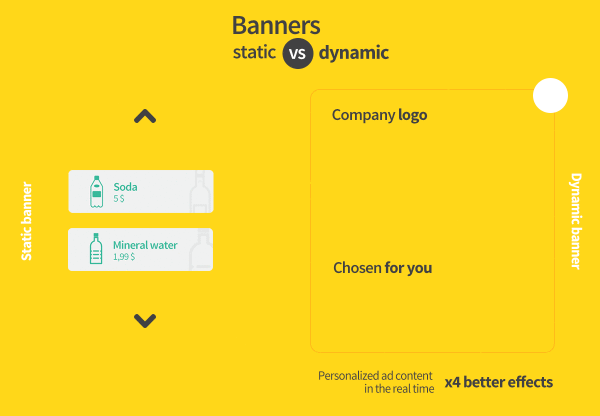
If you are an online retailer and have thousands of products, you can use Google Ads templates or AdRoll, which automatically pull product information such as image, price and availability directly from the shopping section of your account .
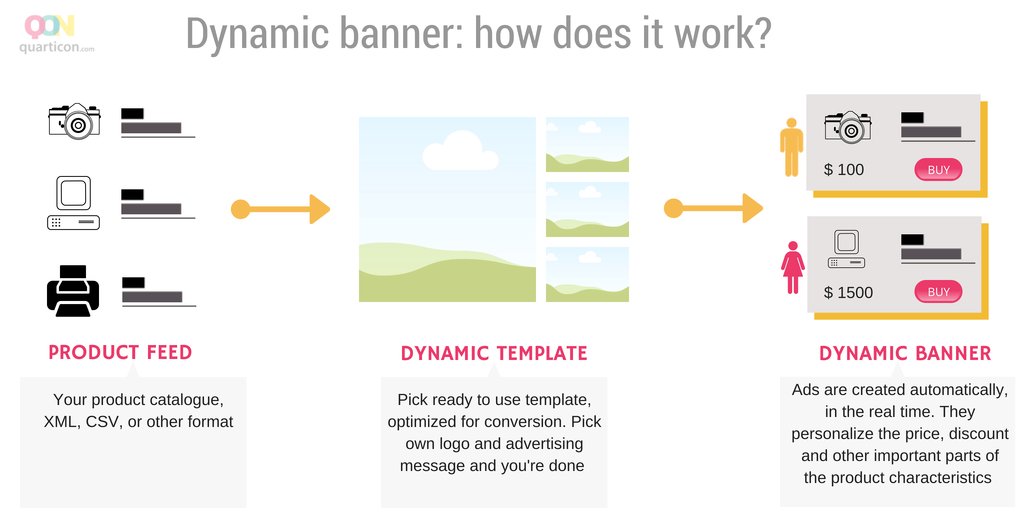
Cookies track which product page the user has visited, so dynamic retargeting will only show products the user has shown interest in.
This typology is very useful for the travel and hotel industry.
To summarize briefly: Google Ads and AdRoll help you create dynamic retargeting ads that instantly appear within the Display Network and on social media such as Facebook and Twitter.
You can then use Temporal Retargeting to show great deals or discounts based on how long a visitor has been in your retargeting audience.
19. CONTENT RETARGETING
Are you investing a significant amount of money in content marketing? If so, content retargeting can be a great way for you to build trust with your visitors and generate future conversions .
Here's how it works:
- You create a retargeting audience made up of users who have read posts or content on your site
- You create a retargeting audience made up of users who have shown interest in your product/service offering.
- You create ads containing text and images that show a small piece of content that users will definitely be interested in or even offer them a free guide.
Here's an example from Dax Hamman in an article on the AdExchanger blog:
”A user searches for information on opening a mortgage and visits the site citimortgage.com . One way to retarget is to show a link like “5 Things to Look for When Getting a Mortgage,” sponsored by Citibank on usatoday.com/money .”
In this case Citibank is sending the visitor directly to content promoted in conjunction with USAtoday.
But if you don't want to shell out a lot of money to create featured content on a major blog/newspaper, you can always direct the visitor back to the content on your blog for example.
To summarize briefly: Content Retargeting is mainly used to build loyalty and trust that visitors have in you and is not aimed at bringing immediate conversions like other retargeting campaigns.
Content retargeting works especially well for industries that have long sales cycles and often aim to educate the visitor rather than drive them to purchase right away.
This technique is great for B2B!
20. REFERRAL RETARGETING
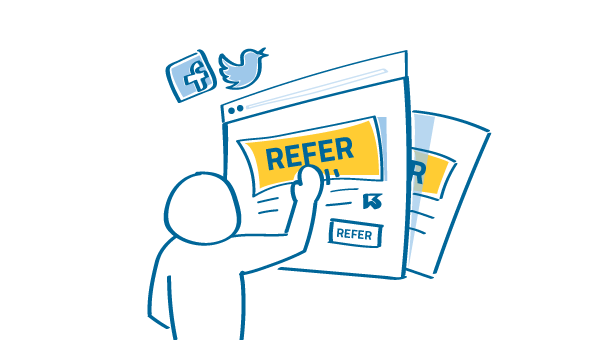
Your visitor is ready to buy, but your up-sell, down-sell, and cross-sell strategies haven’t converted. But if the visitor knew someone who was interested in your products/services, wouldn’t you want to know? Who wouldn’t?
When users convert, you create a new audience with the post-conversion URL and group this audience into a “referral bucket”.
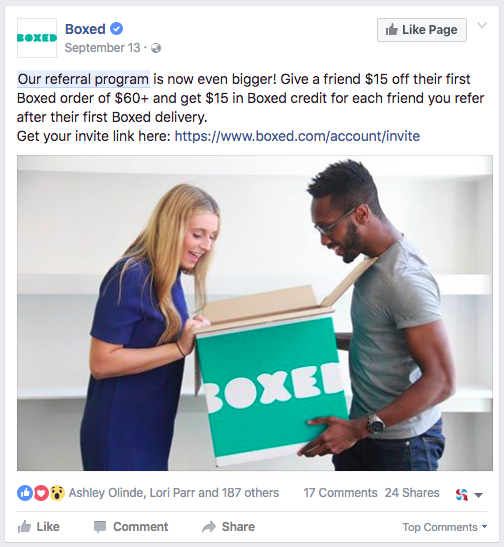
The latter will see an ad like "Invite a friend get 10% off" and will then land on a dedicated landing page; it is very likely that a person who has just purchased will be inclined to send a link to people they know .
You can take inspiration from companies like Uber or Lyft who are developing the best campaigns of this type!
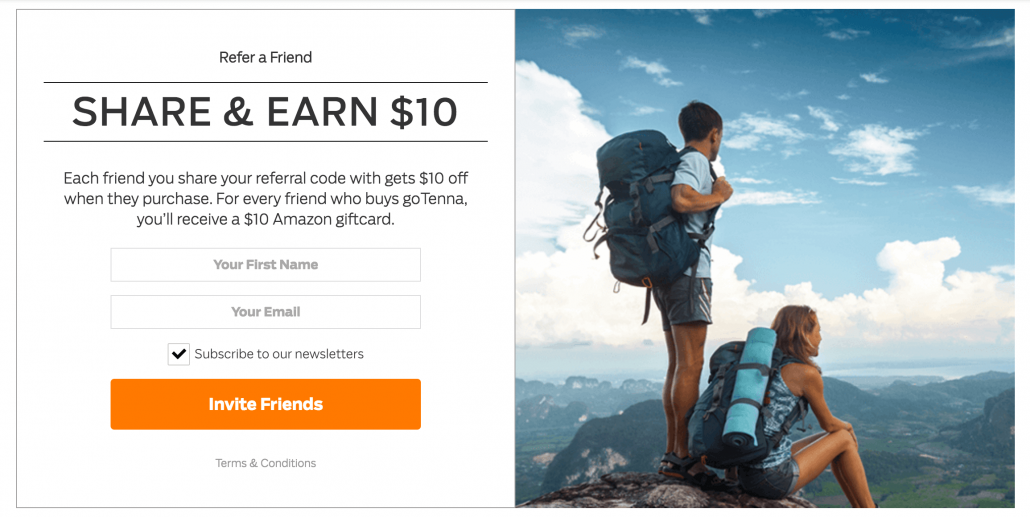
To sum it up briefly: the type of business you own also determines the type of virality you can expect to get from this campaign.
B2C companies often perform better than B2B companies (which have smaller customer volumes).
21. SOCIAL RETARGETING

This type of campaign is definitely one that all advertisers should be using. You can create specific retargeting audiences within social platforms, such as Facebook and Twitter.
AdRoll is one of the leaders in this field, along with PerfectAudience, Criteo and others. In fact, they allow you to retarget your visitors from Facebook, Twitter or other sites.
Linkedin also has its own retargeting system, called Lead Accelerator.
To summarize briefly: some traditional PPC channels like Google Ads do not have direct access to social network ad inventory, so it is advisable to use an external tool where you can group all the data in a single dashboard.
22. RETARGETING THROUGH COMPETITORS
AdRoll, Quantcast, Google Ads give you the opportunity to intercept users who have landed on the page of direct competitors.
There is also a tool called ReTargeting BASE that has a feature called “Pre Retargeting”, with which you can add cookies to visitors of competitors’ sites .
In addition to what we've said so far, you can use these tactics:
- Ads RLSA by selecting the audience and using the competitor's name as keyword
- Ads Gmail Sponsored Promotion (GSP), bidding using competitor domains as keywords
- Ads Search Network with Display Select campaigns helps you show ads based on keywords that have been typed into Google as a prerequisite for ads to appear.
To summarize briefly: No serious advertising platform will allow you to retarget your competitors’ users, but there are ways (see above) that you can mix and match factors to achieve similar results.
23. RETARGETING WITH PARTNER SITES
This campaign involves a partnership between two sites that share pixels.
In concrete terms, a site that sells ketchup will certainly be interested in targeting visitors to a site that sells mustard, and vice versa.

A very current and real example is the partnership between airlines and hotels: different companies but with complementary offers that go hand in hand.
One tool that allows you to create this campaign is Perfect Audience , thanks to a function called Connect.
Maybe I forgot to tell you that the cost of tracking visitors is on average 80% lower than an Ads campaign.
To summarize briefly: very similar to buying email addresses from third parties. It allows you to acquire visitors from other websites at a much lower price than normal.
24. RE-ENGAGEMENT RETARGETING
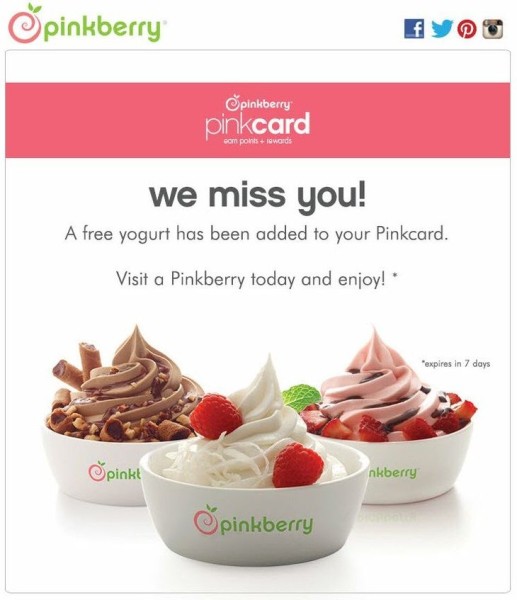
An example from Impact that shows us a model of this type of campaign launched by Pinkberry.
Do you happen to have super old visitors who are no longer active, but are still subject to your cookie or whose email address you may still have? If so, you can benefit from this campaign to use with your old visitors.
By doing this, you can decide whether to send the ads via email or use the email addresses to trace the social network and show the ads there.
To summarize briefly: users who have visited you in the past know who you are, you just need to remind them why they should be interested again! Use re-engagement retargeting to propose new offers to old visitors and turn them into customers.
25. RETARGETING TO POTENTIAL INTERESTED PARTIES WHO HAVE NEVER SEEN YOU BEFORE
Have you ever wanted to reach people who have never been to your site, but who during their searches have typed keywords related to your business and could therefore be interested in you?
This retargeting allows you to do it only through banners. Below is an overview taken from Bannersnack of how it works:

The search engine (Google or Bing, etc.) is the platform that releases the cookies and the same one that then communicates the data to the campaign platform and that you will finally use to select visitors.
To summarize briefly: if your business is plagued by a high CPC, this type of retargeting can help you find your keywords inside the banners (cheaper solution).
26. RETARGETING VIA YOUTUBE
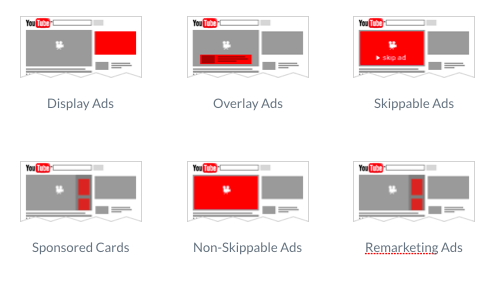
YouTube is the second largest search engine in the world and is therefore attractive due to its extremely affordable costs per view (cost per each view).
You can create a video ad that will allow you to add audience data and further segment your target audience, the same way you would create a regular banner for a retargeting campaign.
The downside to this type of campaign is that creating a video ad is neither easy, nor fast, nor cheap.
In Samsung's case study, YouTube retargeting helped them reach 80% of impressions from TV viewers that could ONLY have been reached through a traditional TV advertising campaign.
To summarize briefly: Youtube offers 3 types of ads that your audience is "forced" to watch. If you are curious and want to try this channel, create a low-cost video and get involved.
27. RETARGETING TO THOSE WHO OPEN A NEW BROWSER WINDOW
![]()
mention.com is very good at entertaining its users when they decide to open a new browser window.
As you can see in the image, the mention.com site bar changes as soon as you leave the page and open a new one!
To summarize briefly: it is one of the classic examples outside the box, mention.com has found a way to make users spend more time on their site.
28. RETARGETING ON THE SITE
I'm pretty sure you've seen this type of retargeting before. Usually, a rectangle or square appears as you scroll down or when you're about to leave the page.
The goal of on-site retargeting is to get people to take advantage of your offer or discount or to subscribe to your blog. Here are 2 examples:
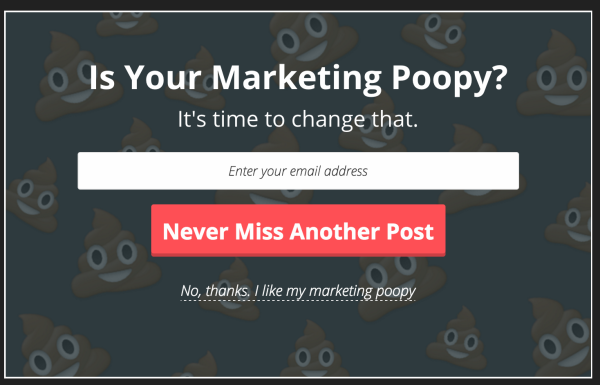

To summarize briefly: Duration, frequency, abandonment intent, device will all perform differently. Break down your campaigns by each different criteria and see which performs best.
29. RETARGETING THROUGH PUSH NOTIFICATION
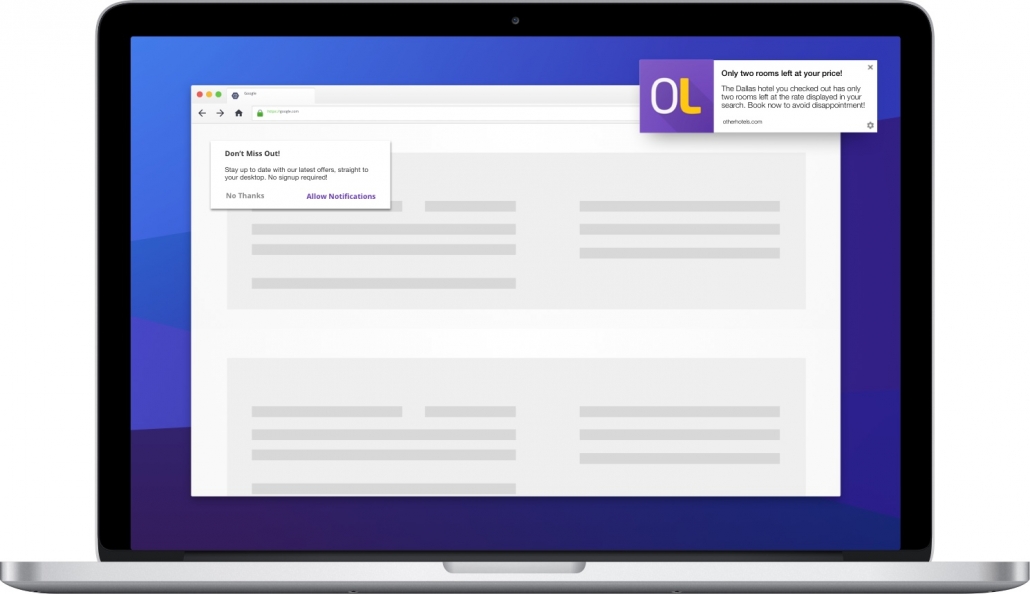
You know those push notifications that arrive on your mobile phone or desktop?
You too can take advantage of this to target visitors browsing from Chrome, Safari and Android.
A tool called PushCrew lets you send push notifications to visitors regardless of the site they are visiting; you can send them a notification about a new blog post you have published, for example.
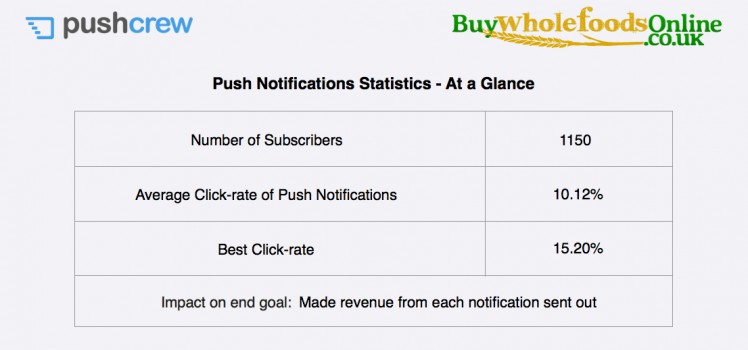
The famous site ConversionXL, for example, is using PushCrew and if you go to the PushCrew site you can see for yourself some case studies and the results obtained thanks to this tool.
It's a great alternative method to differentiate yourself from the classic ads and emails that everyone is using nowadays.
To summarize briefly: even if the user's browser is closed, push notifications still arrive on the desktop .
30. RETARGETING SHOPPING CART ABANDONERS
If you have an eCommerce you will surely also have many abandoned carts (i.e. people who choose the products, add them to the cart, but ultimately do not proceed with the purchase).
And I bet your goal is to get those users back and make them finally make the purchase! You can do this by sending them an email that takes them directly to their cart (where the products they have chosen have been saved).
Depending on your sales volume, of course, retargeting can have a big impact on your final profit.
As you can see, this campaign can help you recover between 3% and 11% of the sales you thought you had lost .
Tools like Rejoiner and CartHook are great solutions that you can use right away through the shopping cart. They capture the email address of people who are at the end of the purchase process, i.e. the payment. If they decide not to buy, an email will be automatically sent to them with images of the products chosen and a call-to-action to make them return to the purchase page.
To summarize briefly: with this type of campaign you can remind users who have not completed the purchase on your site and you can therefore recover many purchases that you thought were lost.
31. CPA RETARGETING
Retargeting offers several ways to make an offer.
- CPC, where you pay for each click received
- CPM, where you pay for every thousand impressions
- CPA, where you pay for each conversion made
The last option you can set on Google Ads. You just have to set the maximum amount you want to spend.
To summarize briefly: if you decide to use this retargeting strategy, you will probably have to pause all the others (assuming you are using more than one strategy). It is not the best when multiple campaigns are competing (also because in this case a CPC campaign would win).
32. RETARGETING VIA PHONE APPS
So far we've talked about campaigns suitable for those who own an eCommerce or companies that use Lead Generation. But what if you wanted to reach people who download your app or take advantage of a sponsored offer within your app?
Retargeting people who use apps has been proven to be the cheapest and most effective way to acquire new users .
Let's say someone has already visited your app's website or landing page, but hasn't downloaded it. Your goal with retargeting is to get that user to download your app.
Instead, let's say someone has already downloaded your app. Your goal with retargeting is to get them to buy something within your app or increase their engagement with your app.
Whatever your goal, you can put this retargeting strategy into motion through Google Ads.
To summarize briefly: the possibilities offered by Retargeting via Phone Apps are growing rapidly. More and more companies are creating mobile ads and giants like Google and Facebook are making it easier and easier to track any information you need, even through apps.
You can also insert links that take you directly to a section within your app.
33. SMOOTHER RETARGETING
Smother means to suffocate something, so you may want to skip this paragraph. Don't, it's not what it seems.
It is true that you are always advised to show your retargeting ad only a certain number of times during a period to a single user, so as not to be too annoying.
But who says that being persistent doesn't bring you an incredible ROI? ? Smother retargeting is exactly that: showing your ad as many times as possible!
Use as many tools as possible to do this: Google Ads, AdRoll, SiteScout to hit your visitors wherever they are browsing (Facebook, Twitter, other websites).
Use the same method for abandoned carts (if you have an eCommerce), and do it through email retargeting. You can then later create an audience of users who have almost converted.
To summarize briefly: the goal is to consistently bombard a given audience for a short period of time and see if you can reduce the time to conversion.
Make sure you understand all the potential areas your visitors might navigate to (other than your site or landing page).
34. RETARGETING BASED ON INFORMATION RECEIVED DURING THE CALL
This trick works almost exclusively on campaigns in English-speaking countries.
Call data provides a lot of insights into your prospects that digital interactions can’t. You can use “ smart calling” to segment your email audience in a personalized way.
Here's how:
- Use Smart Calls to Track Marketing Sources of Calls
- During incoming phone conversations, use the analytics tool to capture the outcome and important information of each call, such as a sale, a missed opportunity, a threat from a competitor, etc.
- Sync this data with your marketing automation tool and use it to create your audience segment and update your contact records with call data.
- Send an email to highly selected audience based on online activity and call.
For example, if a prospect called specifically looking for car insurance but didn't purchase, put them on an email list that offers car insurance.
To summarize briefly: use smart calling to help you better understand your audience's interests so you can segment them more easily and insert contacts into personalized emails.
35. RETARGETING THAT PERSONALIZES THE WEB EXPERIENCE BASED ON THE CALL
Create web experiences that delight users looking for meaningful conversations.
Here's how:
- Put a phone number or call button on your website and emails so you know when people call directly from your site or email.
- Enter this data into your platform or analytics tool to make sure you remember that the next time a user visits your site or opens an email from you, they are more likely to call you.
To summarize briefly: call data helps create personalized experiences for a visitor who returns to your site.
36. RETARGETING TO PEOPLE WHO CALL
In order to send your audience the best retargeting ads, it is important to understand the behavior that users have had in the past. You can use the call button to retarget visitors based on their online engagement and especially their call history and what was said during those calls.
Here's how:
- Sync data with your retargeting platform
- Create audiences based on a) the campaigns users have interacted with and b) their call history
- Create personalized offers for different segments
- Launch retargeting campaigns
For example, a visitor calls you and orders a basic product over the phone. You can then offer them an up-sell (complement to the item they purchased). If they don't buy, you could retarget by offering a discount coupon. For this reason, you should always take note of what was said during the call .
Without call data, you risk sending discount ads to visitors who may have already purchased.
To summarize briefly: improve your ads with call data to ensure your visitors receive the best offer for them, based on their behavior.
37. RETARGETING BY TRACKING TELEPHONE CONVERSIONS TO DIRECT THE USER TO THE RIGHT LANDING PAGE
Effective landing page optimization is based on the complete visitor journey. With smart calling, you can measure and optimize your landing page performance in terms of online and offline conversions.
as:
- Integrate call data into your optimization tool so you can track conversions (if any) for each call.
- Measure and analyze how your landing page performs online and with call conversions
- Run an A/B test to see which elements increase conversions
- Keep in mind that you may definitely get more clicks than calls, but calls usually lead to bigger sales .
For example, a leading home security system company created two identical landing pages for the same product offering.
They conducted an A/B test, where one landing page had a call as a call-to-action, the other a subscription. The first one obtained a 37.89% increase, while the second one obtained a 14.34% decrease compared to the offline one.
38. RETARGETING BY CREATING A CUSTOM AUDIENCE BY PHONE NUMBER ON FACEBOOK
Your ads depend on your ability to choose the right audience. You can create personalized ads based on call data.
Here's how to do it:
- Insert a call button into your ads to collect data such as: name, surname, age, location, telephone number, etc.
- During the call, identify the product/service that users are interested in
- Create a custom audience on Facebook Ads using the phone numbers of people who called.
- Create impactful ads to retarget customers who called from Facebook.
For example, use your CRM to create an audience of users in the same geographic area who are interested in the same product/service. Use their phone number to create a custom audience on Facebook and create impactful ads aimed at them.
WHAT TO DO NOW
Successful retargeting requires consistency in testing the effectiveness of your ads and finding new criteria to segment your audience. Finally, I would like to give you some tips that can be useful:
- Frequency: Limit the visibility of your ads to users;
- Pixel/URL: Once users convert, add them to a new retargeting audience.
- Audience Diversity: Segmenting your audience and doing it right is rule #1, especially compared to some of the tactics I talked about in the guide.
After reading the guide, what do you think is the right strategy for you?? Let me know!

